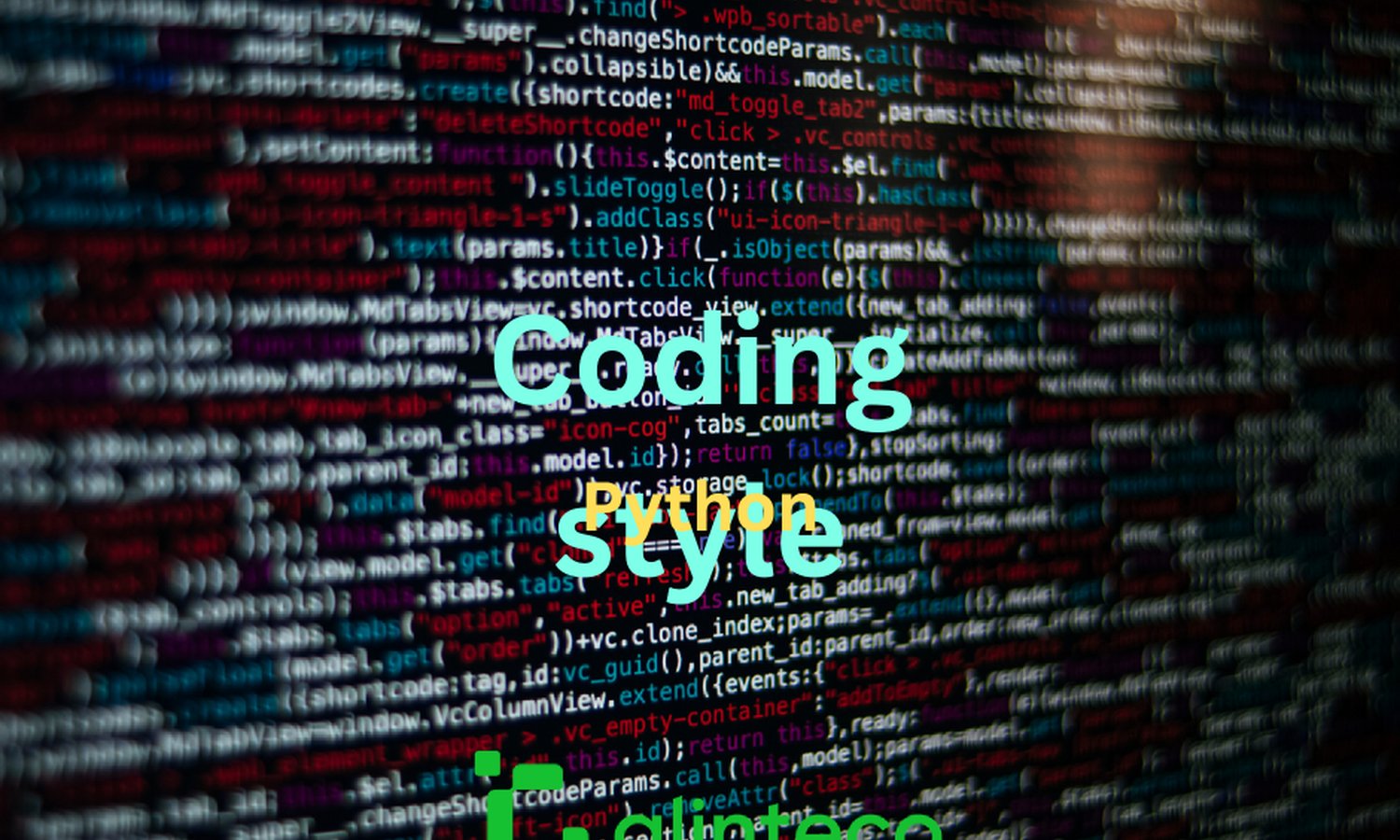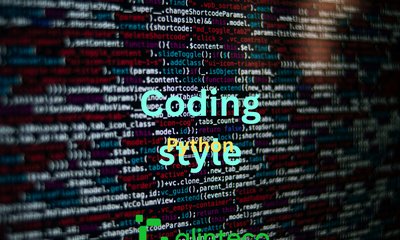どのPythonコーディングスタイルに従うべきですか?
By hientd, at: 2023年11月30日8:44
Estimated Reading Time: __READING_TIME__ minutes


はじめに
Pythonの可読性とシンプルさは、開発者からの人気の高さを支えています。しかしながら、保守性と共同作業のためには、一貫性のあるコーディングスタイルを遵守することが極めて重要です。この記事では、完璧なPythonコーディングスタイルを実現するためのベストプラクティス、ツール、ヒントを探ります。
適切なPythonコーディングスタイルの選択
Pythonのコーディングスタイルに関しては、PEP 8やGoogleスタイルガイドなど、広く採用されているいくつかの標準があります。選択は、プロジェクトの要件、チームの好み、コミュニティの慣習などの要因によって異なります。コードの一貫性と可読性を確保するために、プロジェクトのニーズに合致するスタイルを選択することが不可欠です。コーディングスタイルがコードの保守と共同作業に与える影響は、過小評価できません。
コード検証とクレンジングのためのパッケージ
一貫性のあるコーディングスタイルを維持するために、開発者はしばしばコード検証とクレンジングのためのツールに頼ります。Flake8、PyLint、MyPyは人気のある選択肢です。これらのツールは、構文エラーやスタイル違反を特定するだけでなく、改善のための提案も提供します。これらのパッケージそれぞれについて詳しく見ていき、その機能を探り、その有効性を示す実践的な例を示します。
1. Flake8:
- Flake8は、PyFlakes、pycodestyle、Ned BatchelderのMcCabeスクリプトの機能を組み合わせたものです。
- 例:
flake8 path/to/code/to/check.py
- Flake8は、コンマの後の空白文字の欠落などの問題を特定します。
2. PyLint:
- PyLintはスタイルチェックを超えて、潜在的なエラーについてコードを分析し、コード品質メトリクスを提供します。
- 例:
pylint --recursive=y mydir mymodule mypackage
- PyLintは、文字列と整数の連結を試みたことをフラグ付けします。
3. MyPy:
- MyPyは静的型チェックに重点を置いており、型アノテーションが実際の使用と一致することを確認します。
- 例:
mypy program.py
- MyPyは、関数が指定された型アノテーションに準拠していることを確認します。
Pythonパッケージを使用したコードリファクタリング
リファクタリングは、健全なコードベースを維持する上で重要な側面です。BlackやAutoPEP8などのツールは、このプロセスを自動化し、コードが選択したコーディングスタイルに準拠していることを保証します。これらのツールとその役割について探り、一貫性がありクリーンなコードを実現します。
1. Black:
- Blackは、厳格で一貫性のあるスタイルを提供する、意見のあるコードフォーマッタです。
- 例:
black {source_file_or_directory}
- Blackは、コードを自動的に再フォーマットし、事前に定義されたスタイルに準拠します。
2. AutoPEP8:
- AutoPEP8は、コードをPEP 8スタイルガイドに準拠するように自動的にフォーマットします。
- 例:
autopep8 --in-place --aggressive --aggressive
- AutoPEP8は、PEP 8の規約に従うようにコードを修正します。
3. Fourmat:
- Fourmatは、コードをPEP 8スタイルガイドに準拠するように自動的にフォーマットします。
- 例:fourmat test.py
Pythonコードのヒントとコツ
クリーンで可読性の高いPythonコードを書くには、スタイルガイドに従うだけではありません。コーディングプラクティスを向上させるための以下のヒントとコツを検討してください。
- 意味のある変数名と関数名を使用してください。
- 複雑なロジックを説明するために、明確なコメントを付けてください。
- 大きな関数をより小さく、モジュール化されたものに分割してください。
- インデントと空白文字を一貫して使用してください。
詳しくは、「Clean Code」の哲学に従ってください。
Pythonコーディングにおける課題
コーディングスタイルを遵守することは一般的に簡単ですが、大規模なプロジェクトでは、独特の課題に遭遇することがよくあります。異なるモジュール全体で一貫性を維持し、エッジケースを処理することは重要です。課題となる可能性のあるシナリオを探り、解決策を提供します。
1. 大規模プロジェクトにおける一貫性:
- 複数の貢献者を抱える大規模なプロジェクトでは、一貫性を維持することが困難になる可能性があります。
- チーム内でコーディングガイドラインを確立し、ツールを使用してスタイルチェックを自動化します。
2. 動的コード生成の処理:
- 動的に生成されたコードは、一貫性のあるスタイルを維持する上で課題となる可能性があります。
- 生成プロセスが選択したコーディングスタイルに準拠していることを確認します。
コードスニペットの例
議論されたコーディングスタイル、ツール、ベストプラクティスを適用したコードスニペットの実践的な例を見ていきましょう。
1. 例1 - ネーミング規則:
# 適切なネーミング
def calculate_total_price(item_price, quantity):
return item_price * quantity
# 不適切なネーミング
def foo(x, y):
return x * y
2. 例2 - 明確なコメント:
# 目的を説明する明確なコメント
def calculate_area(radius):
# 円の面積の公式
return 3.14 * radius * radius
# コメントがない
def area(r):
return 3.14 * r * r
3. 例3 - クリーンなロジック:
def find_odd(numbers_list):
odd = []
for index in range(len(numbers_list)):
if numbers_list[index] % 2 == 1:
odd.append(numbers_list[index])
return odd
# より良いロジック、読みやすい、リスト内包表記
def find_odd(numbers_list):
return [number for number in numbers_list if number % 2 == 1]
結論
結論として、一貫性のあるPythonコーディングスタイルを採用することは、コードの可読性、保守性、共同作業のために極めて重要です。Flake8、PyLint、Black、AutoPEP8などのツールを利用し、ベストプラクティスに従うことで、合理化された開発プロセスが保証されます。覚えておいてください。クリーンで可読性の高いコードベースは、贅沢ではなく、成功したソフトウェアプロジェクトにとって必要不可欠なものです。
プロジェクトで一貫性のないコーディングスタイルの問題が発生することが一般的ですが、これはコードの保守と共同作業をより困難にする可能性があります。Pythonの場合、PEP 8などのコーディングスタイルを統一することは、コードベースの可読性と保守性を向上させるための素晴らしい一歩です。この問題に対処するためのいくつかの提案を以下に示します。
-
コーディングスタイルガイドを定義する:プロジェクトのコーディングスタイルガイドを明確に定義します。Pythonを使用している場合は、PEP 8を使用することが広く認められています。他の言語では、コミュニティまたは企業固有のスタイルガイドが利用可能な場合があります。
-
コーディング標準を適用する:コーディングスタイルガイドからの逸脱を自動的に特定し、強調表示できるリンターと静的コードアナライザーを使用します。これにより、開発プロセスの初期段階で問題を検出できます。
-
コードフォーマットを自動化する:Pythonの
autopep8やJavaScriptのprettierなどのツールを使用して、定義されたスタイルガイドに従ってコードを自動的にフォーマットすることを検討します。これは開発ワークフローに統合でき、すべてのコードへの貢献が確立された標準に準拠していることを保証します。
-
コードレビュー:コードレビュープロセスにコードスタイルチェックを組み込みます。すべてのコードへの貢献がコーディングスタイルガイドに従っていることを確認するためのチェックリストの一部にします。コードレビューは、スタイルの一貫性に関するフィードバックを提供する絶好の機会です。
-
チームトレーニング:チームメンバーに選択したコーディングスタイルを理解させるためのトレーニングセッションまたはワークショップを実施します。これにより、特定のスタイル規則に関する混乱や質問に対処できます。
-
一貫性のあるネーミング規則:変数、関数、クラスに対して一貫性のあるネーミング規則を確立して従います。これは、コードの可読性に大きく貢献するコーディングスタイルの重要な側面です。
-
スタイルガイドを文書化する:コーディングスタイルガイドが適切に文書化され、簡単にアクセスできるようにします。このドキュメントは、プロジェクトが進化し、コーディング標準が改良されるにつれて定期的に更新する必要があります。
-
継続的な改善:チームの経験とフィードバックに基づいて、定期的にコーディングスタイルガイドを見直して改良します。テクノロジーとベストプラクティスは進化するため、コーディング標準を適応させることが不可欠です。
これらのプラクティスを実装することにより、よりまとまりのある保守しやすいコードベースを作成し、より生産性の高い開発プロセスとチームメンバー間の共同作業の改善につながります。
よくある質問(FAQ)
Q1:特定のPythonコーディングスタイルに従うことは必須ですか?
A1:必須ではありませんが、一貫性のあるコーディングスタイルに従うことで、共同作業とコードの保守性が向上します。プロジェクトとチームに適したスタイルを選択してください。
Q2:どのくらいの頻度でコード検証ツールを実行する必要がありますか?
A2:コード検証ツールは、
Q3:プロジェクトの要件に応じてコーディングスタイルのルールをカスタマイズできますか?
A3:はい、多くのツールは構成オプションを提供しており、プロジェクトの特定のニーズに基づいてコーディングスタイルのルールをカスタマイズできます。この柔軟性により、選択したスタイルガイドラインがチームの好みとプロジェクトの要件に合致することが保証されます。
Q4:Blackのようなコードフォーマットツールを使用することによるパフォーマンスへの影響はありますか?
A4:コードフォーマットツールはわずかなオーバーヘッドを追加しますが、一貫性のあるフォーマットと可読性の向上による利点は、最小限のパフォーマンスへの影響を通常上回ります。ほとんどの場合、実行時パフォーマンスへの影響は、クリーンで標準化されたコードベースの利点と比較して無視できます。





